I continually read books about plants travel and history. So here are some reviews and recommendations:
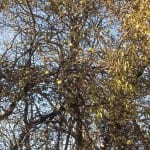 Ghosts of Evolution by Connie Barlow. In 1982 Dan Janzen and Paul Martin published an important paper in Science called “Neotropical Anachronisms: The Fruits the Gomphotheres Ate.” In that paper they argued that the extinction of some 64 species of big animals–mammoths, ground sloths, camels, gomphotheres–in the Americas about 10,000 years ago left many plants without animals to disperse their seeds. Their focus was mainly in tropical America. About 2000, Connie Barlow came across this story and, intrigued, went looking for North American examples. The book she wrote will make you see familiar plants in new ways. My blog on Osage-orange (link) describes only one such plant.
Ghosts of Evolution by Connie Barlow. In 1982 Dan Janzen and Paul Martin published an important paper in Science called “Neotropical Anachronisms: The Fruits the Gomphotheres Ate.” In that paper they argued that the extinction of some 64 species of big animals–mammoths, ground sloths, camels, gomphotheres–in the Americas about 10,000 years ago left many plants without animals to disperse their seeds. Their focus was mainly in tropical America. About 2000, Connie Barlow came across this story and, intrigued, went looking for North American examples. The book she wrote will make you see familiar plants in new ways. My blog on Osage-orange (link) describes only one such plant.
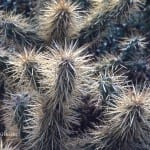 Wicked Plants by Amy Stewart . This pretty book focuses on plants that are can be dangerous. Dangerous to eat, to bump against, to grow and more. Well, yes, there are many poisonous or otherwise potentially damaging plants we walk by each day. She tells a lot of good stories. I wish she had included references so I could read even more detail and I would have liked to know the plant family for all species. It is a very entertaining book.
Wicked Plants by Amy Stewart . This pretty book focuses on plants that are can be dangerous. Dangerous to eat, to bump against, to grow and more. Well, yes, there are many poisonous or otherwise potentially damaging plants we walk by each day. She tells a lot of good stories. I wish she had included references so I could read even more detail and I would have liked to know the plant family for all species. It is a very entertaining book.
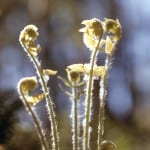 Oaxaca Journal by Oliver Sacks. Neurologist and plant hobbyist Oliver Sacks went to Mexico with an American Fern Society trip. His commentary is full of insight on plants, Mexico and life. Delightful.
Oaxaca Journal by Oliver Sacks. Neurologist and plant hobbyist Oliver Sacks went to Mexico with an American Fern Society trip. His commentary is full of insight on plants, Mexico and life. Delightful.
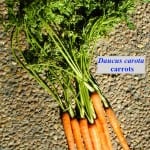 100 Plants That Almost Changed the World by Chris Beardshaw. This is an eclectic mix of stories about plants that were important in economic development or a war effort or some other aspect of human history. The plants chosen have a European, actually British, bias, which I liked because while I know a lot of plant stories, some of these were unfamiliar to me. The book is bright colored and whimsically illustrated. Plant common names were often capitalized and as were some other common nouns, such as bees, which are not correct usage. Even more annoying, it wasn’t consistent: in the same paragraph, bluebell, camelia and hibiscus were capitalized, but not carnation. Overlooking that, the stories are delightful.
100 Plants That Almost Changed the World by Chris Beardshaw. This is an eclectic mix of stories about plants that were important in economic development or a war effort or some other aspect of human history. The plants chosen have a European, actually British, bias, which I liked because while I know a lot of plant stories, some of these were unfamiliar to me. The book is bright colored and whimsically illustrated. Plant common names were often capitalized and as were some other common nouns, such as bees, which are not correct usage. Even more annoying, it wasn’t consistent: in the same paragraph, bluebell, camelia and hibiscus were capitalized, but not carnation. Overlooking that, the stories are delightful.
 Tulipomania by Mark Dash. In the 1630s, Dutchmen traded whole estates for single tulip bulbs. It is one of the earliest known financial bubbles. Dash reviews how tulips and economics intersected to create a positively amazing event.
Tulipomania by Mark Dash. In the 1630s, Dutchmen traded whole estates for single tulip bulbs. It is one of the earliest known financial bubbles. Dash reviews how tulips and economics intersected to create a positively amazing event.
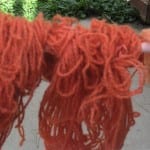 A Perfect Red by Amy Butler Greenfield. This book is the history of a color, covering the various dyes used to create reds historically and the intrigue that accompanied the search for good bright stable dyes. It is an engrossing story full of colorful characters.
A Perfect Red by Amy Butler Greenfield. This book is the history of a color, covering the various dyes used to create reds historically and the intrigue that accompanied the search for good bright stable dyes. It is an engrossing story full of colorful characters.
The Spice Route by John Keay. Throughout history, small amounts of spices commanded remarkably high prices. This book gives wonderful details–all kinds of engrossing stories of finding and trading spices.

Leave a Reply
Want to join the discussion?Feel free to contribute!